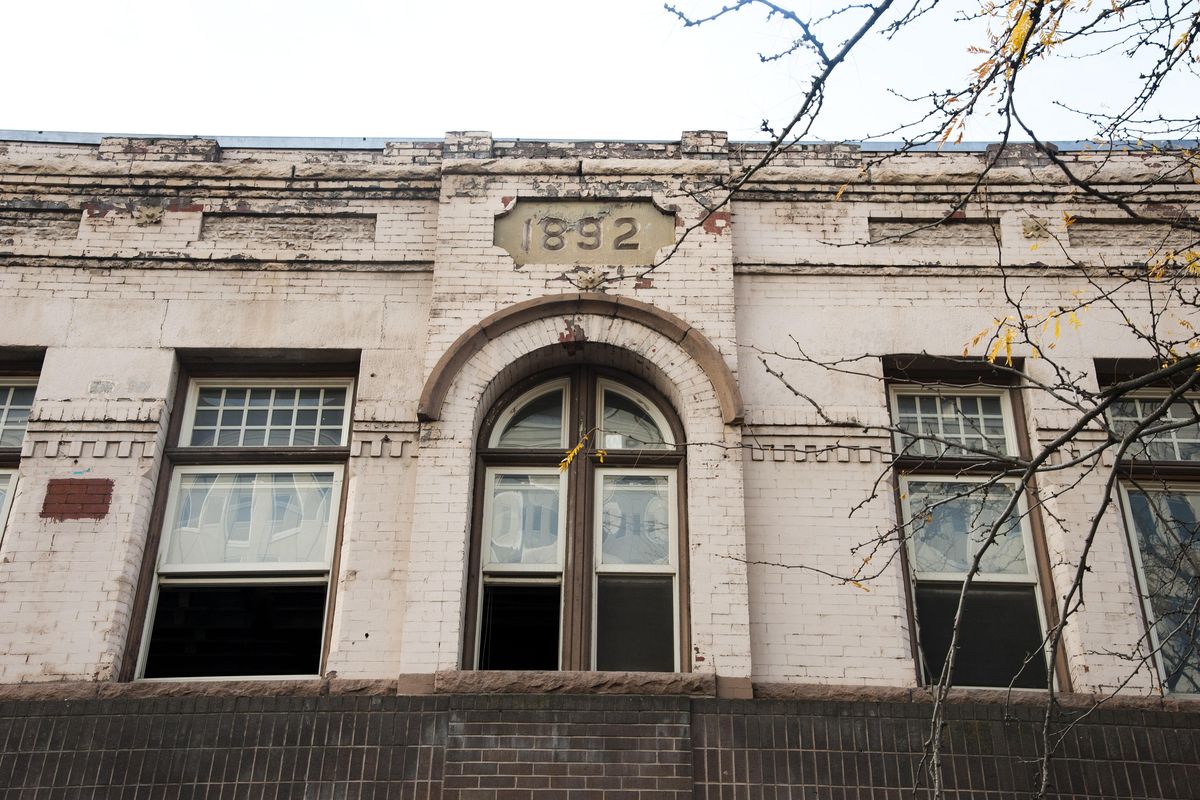Genesee Block building’s owner wants to revive its history

Commercial developer Mike Craven sees something in the aging Genesee Block building that others might miss.
He sees an unpolished jewel with a ton of potential and a legacy to prove it.
People familiar with downtown Spokane are more likely to walk right past this less-than-stellar building that most recently housed a pawn shop and an ink cartridge store.
A closer look at the 1892 building at 819 and 821 W. Riverside Ave. reveals a structure rich in the history of commerce in the heart of downtown Spokane.
“It’s just smack dab in the middle of downtown,” Craven said. But the lack of attention given to the building drew his attention because it offered a great opportunity.
“It sat there and it seemed like nobody put an investment into it for so long,” he said.
The Genesee Block is one of the remaining commercial structures erected after the Great Fire of 1889.
That fact alone was enough to persuade the City-County Historic Landmarks Commission last month to recommend the building for listing on the Spokane Register of Historic Places. The listing is awaiting City Council approval.
Craven bought the property in June and is now well into a $700,000 project to rehabilitate the structure for new commercial uses on the ground floor and residential spaces on the second story.
After gutting most of the nonhistoric interior elements, Craven discovered a masonry building that was intended to last through the ages.
Megan Duvall, historic preservation officer in Spokane, said a masonry expert toured the building recently and pronounced it in good health despite its rugged look today.
“It’s pretty darn sound,” she said. “It doesn’t have any bowing. It doesn’t have any cracks.”
Craven said he was encouraged by the assessment that came during a masonry workshop in early October.
In researching the building, Craven said, he found an original “party wall” agreement that indicated the original owners wanted to build more floors on top of the two original ones. The idea of expanding upward came up again in the 1940s, he said. But a taller Genesee never materialized.
Instead, much of the first-floor exterior on the street was removed or covered with more modern brick, ruining the Romanesque Revival-style exterior on the ground floor. Some of the original iron decoration is still in place.
The upper-story brickwork, windows and central arch remain on the second floor to show the historic pedigree of the Genesee.
Because of the extreme alterations, the historic preservation office and landmarks commission opted not to recommend historic listing based on the building’s architecture. Instead, the commission voted to list the building because of its prominence in the commercial history of downtown.
The register nomination written by Jennifer Gorman, of Gorman Preservation Associates, documents the many enterprises that once operated out of the Genesee Block:
- E. Bertrand & Co. ran a grocery store at 819 W. Riverside in the first years.
- In 1895, the Fred T. Merrill Cycle Co. had a shop there, followed by a jeweler and then a hatmaker.
- Bartlett’s Women’s Clothing occupied the space from 1915 to 1927. The space was later shared by Osborne Millinery Store. Around that time, the building had a sign for the Musician’s Club. In the 1930s, the tenant was Wolper’s Ladies Shop.
- That business was followed by the Western Hair Co. Beauty Shop in the 1940s. During the period, the interior, including a mezzanine floor, was remodeled with an Art Moderne look.
Craven said that may be the last time any significant investment was put into the Genesee. Remnants of the sleek-looking beauty shop remodel are still there.
By the 1960s, the building became Mister Lee’s Spokane Beauty School until the late 1970s.
Then it became the Spokane School of Hair Fashion and later Mr. J’s Academy of Cosmetology.
The pawn shop took over in the 1990s.
The adjacent commercial space at 821 W. Riverside had its own long list of tenants:
- It started out as the Spokane Cloak and Suit House; then the CG Staples & Sons Confectionary Store and Factory.
- That was followed by a dry goods store.
- In 1929, the CE Carlson Co. Furs started business there, and apparently remodeled a basement room with corkboard for storing furs.
- In the late ’50s and early ’60s, the building had an oriental imports shop. After that came Binyon Optometrists; H.L. Men’s Clothing; and the Tom Crowley Shoppe for Men.
- In 1980, a Hallmark card shop arrived and later a Subway sandwich outlet. After that, the space was used by artist James LaVigne.
An original stamped tin ceiling is still in place.
Craven has had the interior largely gutted. He has saved some of the original timbers and even pulled a few hand-hammered square nails.
Craven said he is considering a national historic register nomination in addition to the local register nomination.
He said he hopes to start renovation later this year and complete the job next year.
About the muddled exterior, he said, “We are going to bring it back to something that is far more appropriate for that era.”